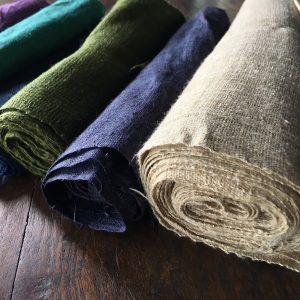Detox in the textile industry – real progress or Potemkin villages?
In this article we cast light on the progress of the Detox campaign in the textile industry. Detox is an initiative started by the environmental activist organization Greenpeace to challenge the business practice of global fashion brands who source from suppliers allegedly polluting the environment with hazardous chemicals. Their aim is to eliminate the discharge of hazardous chemicals from the effluents of textile processing factories by the year 2020.
Greenpeace´s Detox catwalk bashing again global fashion brands
 In their recently released update of their “Detox catwalk” the NGO Greenpeace examined the progress of 19 fashion brands opposite the target to eliminate all hazardous chemicals from their supply chain by 2020. Most fashion brands failed. Esprit, Limited Brands, Li-Ning and Nike performed worst in the assessment. According to Greenpeace, Nike even failed to satisfy in all of the assessed criteria. Only three European fashion brands, namely Spanish Zara (Inditex), Swedish Hennes & Mauritz (H&M) and Italian Benetton earned credit for their progress.
In their recently released update of their “Detox catwalk” the NGO Greenpeace examined the progress of 19 fashion brands opposite the target to eliminate all hazardous chemicals from their supply chain by 2020. Most fashion brands failed. Esprit, Limited Brands, Li-Ning and Nike performed worst in the assessment. According to Greenpeace, Nike even failed to satisfy in all of the assessed criteria. Only three European fashion brands, namely Spanish Zara (Inditex), Swedish Hennes & Mauritz (H&M) and Italian Benetton earned credit for their progress.
“We applaud H&M, Zara and Benetton for leading the way and setting a new standard in toxic free fashion………our assessment shows that the textile industry as a whole is not doing enough to go toxic-free. 16 out of the 19 brands assessed are stumbling over transparency issues or failing to eliminate toxic chemicals; with only three years left they must speed up now if they’re to meet their 2020 deadlines,” commented Kirsten Brodde, Greenpeace ´s campaign manager.
The full ranking of companies is here: http://greenpeace.org/detoxcatwalk.
Detox campaign
The Detox campaign was launched by Greenpeace in 2011, with more than 70 brands participating. Brands made commitments opposite Greenpeace “to detox” their supply chain. The NGO claims the involved companies would represent 15% of the global textile production.
Since 2011, Greenpeace published various professional reports on objectionable hazardous chemicals in the effluents of factories as well as on textiles. The full spectrum was covered: Luxury brands such as Louis Vuitton, Versace, Dior, Giorgio Armani, Dolce & Gabbana and others (“A Little Story about a Fashionable Lie”) were exposed in a similar manner as clothing of discounter supermarkets such as Aldi, REWE, Tschibo etc.
16 of the 19 brands now covered in the latest “Detox catwalk” are members of the ZDHC (Zero Discharge of Hazardous Chemicals) program, and initiative of leading retailers to tackle the challenge by Greenpeace.
Criteria for the Detox catwalk assessment
According to the Greenpeace, the criteria for the assessment were
- proactive and precautionary plan for Detox 2020
- elimination of perfluorinated chemicals (PFCs)
- disclosure of suppliers and hazardous chemicals discharge
In particular, Greenpeace challenges the handling of manufacturing restricted substances lists (MRSL): In their eyes, the better performing companies have developed their own MRSLs, while the “underperformers” have relied merely on the ZDHC MRSL. In ZDHC´s list (v1.1 of 2015) the NGO Greenpeace sees “methodological flaws and limited ambition”, according to Ms. Brodde. The criticism is around PFCs not being detailed enough, ignorance of major hazardous substances (including toluene, dimethylformamide or formaldehyde), and lack of clear phase out plans which were replaced by “research lists”.
Clearly, in the eyes of Greenpeace it is not good enough to be member of ZDHC and only to follow their approach. If you want to be acknowledged as a leader, you must be faster than peers. Fashion brands have to take own initiatives and be proactive. This doesn´t come as surprise – similar criticism was raised before. ZDHC lacks own chemical expertise and is influenced by “lobbyists” of the chemical industry who see Detox primarily as a marketing platform (we have stressed this point as early as 2012). ZDHC also needs to consider the interest of all their paying member companies. This tends to end up in criteria which are the lowest common denominator. Therefore it is no surprise that Greenpeace, who has a political agenda as an environmental activist group, will always challenge ZDHC.
How valid is this criticism?
There are certain aspects of the Greenpeace criteria which are, let´s say, somewhat arbitrary and questionable, given the fact that we are in the middle of the process that started 5 years ago, with only 4 more years to go till deadline 2020.
Greenpeace focused in recent years their efforts mainly on polyfluorinated carbons (PFC´s) which are used to obtain water and soil repellent properties. The NGO published various reports about PFC traceability: in snow, collected in remote areas of the world[1], in outdoor gear[2] and even air pollution in branded stores[3]. In the last two years Greenpeace did not cover much of the other hazardous chemicals. We don´t want to play down that PFC are a substance class of concern and, spoken in the words of Greenpeace, “the PFC problem is nowhere near to being solved”[1], but the same is true for many other hazardous chemical classes. But fact is also, this issue of PFC is largely related to outdoor clothing, footwear and workwear, products which are requiring water and stain repellent properties. It affects only limited parts of the market. Fashion does not require water and soil repellency. A fast fashion retailer will be far less exposed to PFC, compared to an outdoor brand, therefore it is much easier for them to make commitments on PFC phase-outs. Therefore, the focus on PFC as one of the three main criteria on top level is a little awkward. It allows fast fashion brands to make easy commitments and earn credits for easy targets. PFC is an issue for a specific niche segment of the market only. There are many other critical chemical classes with a much wider penetration. So, why not consider all “priority classes” in a similar manner, at this stage of the process when we should be beyond pilot stage.
Greenpeace is now addressing the issue of specific volatile organic compounds (VOCs) in MRSLs. VOCs are common solvents such as dimethylformamide (DMF) or toluene. These were not included in the 11 priority substance classes which were applied in early commitments, and not included in the original ZDHC roadmap. DMF is used mainly in plastics, e.g. polyurethane in footwear soles. Greenpeace in deed found VOCs in all tested footwear articles: DMF was found in 21 of 21 football boots (“A red card for sportswear brands”). For a footwear company such as Nike or adidas this issue has higher relevance compared to a textile fashion retailer.
Thus, the “catwalk” criteria are a different challenge for fast fashion compared to footwear and outdoor brands. The assessment by Greenpeace should be understood in the full context considering the retailers´ respective product portfolio and alternatives.
It seems Greenpeace, as well as retailers, do not focus on the actual implementations of Detox targets, at this stage. Both put efforts on paper commitments such as MRSLs and publication of suppliers´ discharge data in a specific Chinese website (IPE.org.cn). But these are simply lists with data at a given point in time. It does not automatically imply that there was any reduction of any hazardous chemical discharge.
Furthermore, transparency in IPE´s suppliers disclosure and the value of the data is limited (see discussion in part 2). We are not saying transparency is bad. But we stress the point that publication of lists is not good enough.
Another requested layer of disclosure is the release of suppliers list. Of course, chemical companies who want to sell their products highly appreciate free address lists of potential customers. Previously, such brilliant market intelligence had to be gathered with tedious efforts.
Transparency does not automatically mean a cleaner production. This can only be a first step. Clearly more for a real implementation more is required, such as
- Proper chemical management systems
- Awareness building and training of suppliers, in particular operators of wet processing factories
- Factory audits and inspections, preferably supported by independent auditors
- Repeated testing of products, preferably by neutral testing units
- Repeated testing of the water discharge, preferably by neutral testing units
- Disclosure of test results, with consistent improvement (reduction of hazardous chemicals discharge) over time
- Unannounced inspections and sample taking to exclude manipulations
The awareness building and trainings are an important step, especially if one considers that the operators are located in countries like Bangladesh, Cambodia, Pakistan etc. One supplier seminar with nice lectures in 5 star hotels will not do the job.
With respect to the testings, Greenpeace has done this thoroughly in the years 2012-2014, but since then focused mainly at PFCs. And we have seen benchmark test reports from retailers and ZDHC (will be discussed in part 2). It will be crucial to take up the initiative in a more systematic way. Only systematic testing will show the progress in the actual implementation. And most importantly, the tests must show consistent and tangible improvements. Paper commitments and chemicals lists (what we have now) are only working tools.
In part 2 we will look a deeper at the progress of Detox at the fashion brands who have received credit for good progress in Detox: H&M, Benetton and Zara (Inditex).
References
[1] Greenpeace publication, 8 September, 2015 : “Footprints in the Snow – Hazardous PFCs in remote locations around the globe”: Greenpeace undertook eight expeditions to remote mountainous areas on three continents. Snow, and in some places water samples, were taken at a total of 10 locations and analysed for the presence of environmentally hazardous per and poly-fluorinated chemicals (PFCs).
[2] Greenpeace publication, 25 January, 2016 : “Leaving Traces – The hidden hazardous chemicals in outdoor gear”: Greenpeace tested a range of outdoor gear for hazardous per- and polyfluorinated chemicals (PFCs). The study revealed that not only outdoor clothing and footwear but also camping and hiking equipment such as backpacks, tents and sleeping bags contain chemicals that are hazardous to the environment and to human health.
[3] Greenpeace Press release – 13 July, 2016 : “Two outdoor brands come clean as air tests reveal continued hazardous chemical use”: Air tests in stores of global outdoor brands, Mammut, The North Face, Norrona and Haglöfs, revealed that concentrations of volatile PFCs were found up to 60 times higher in these stores than in an average enclosed room, and up to 1,000 times higher than in outside air. The findings were released in a new report by Greenpeace Germany : “Hidden in Plain Sight — Poly-fluorinated chemicals (PFCs) in the air of outdoor stores”




